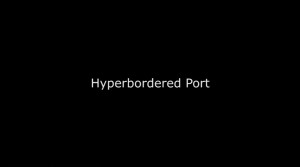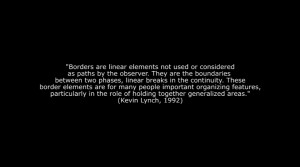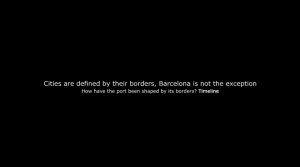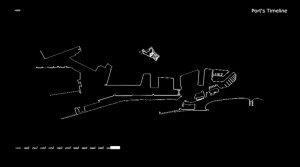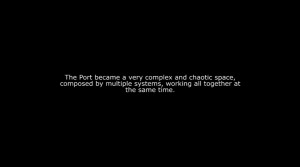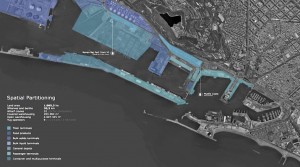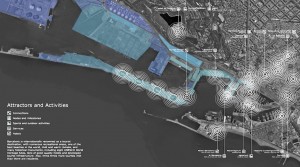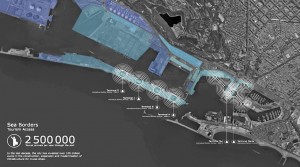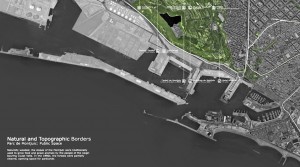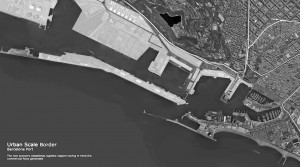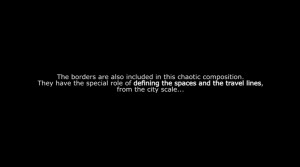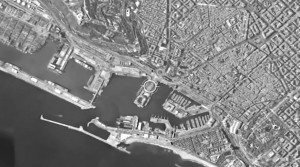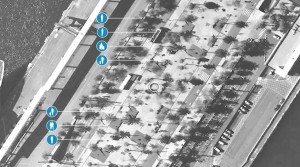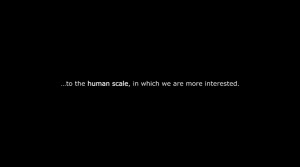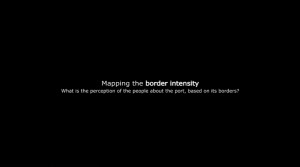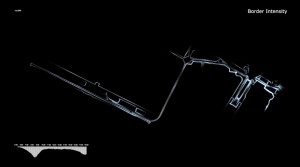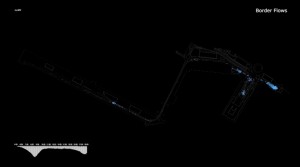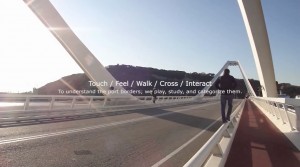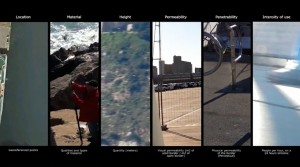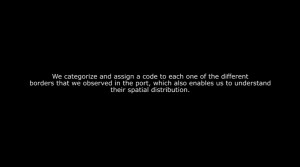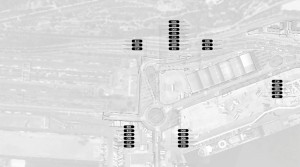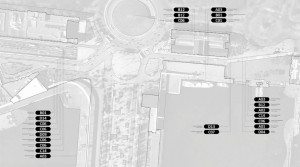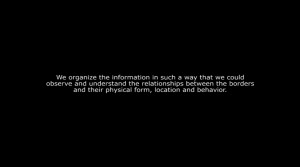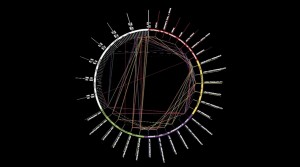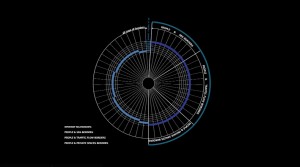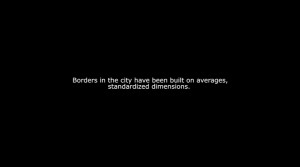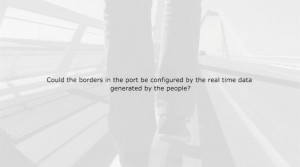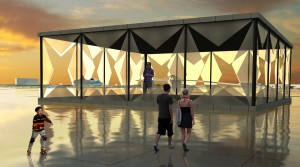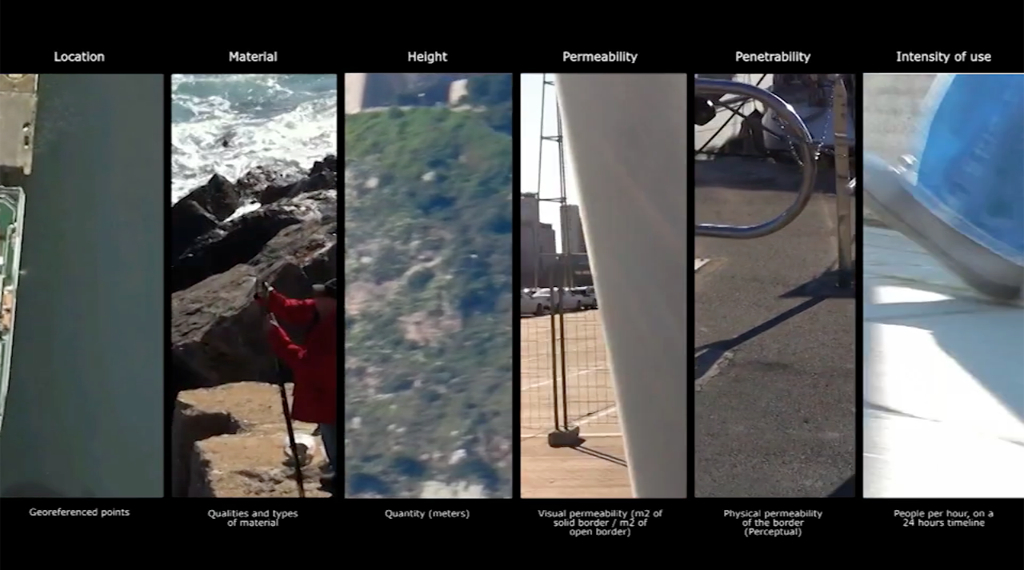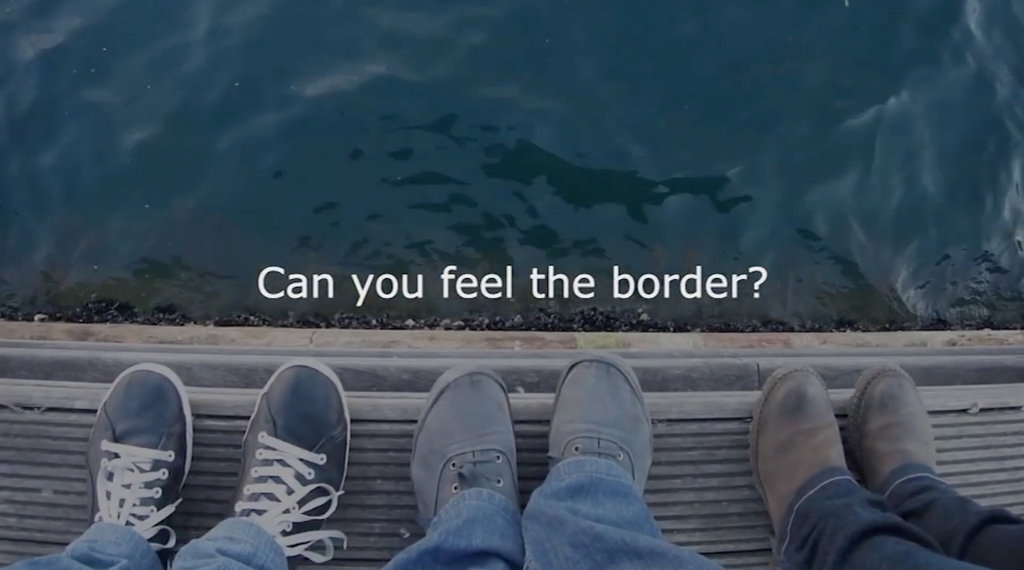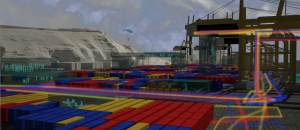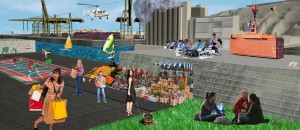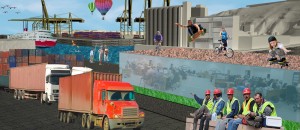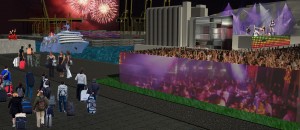Our studio work is about how the garden of nature and the artificial world could be integrated and supported by each other.
In the site exists Barcelona’s biggest element, Montjuic mountain. It is able to purify the rainwater with soil strata, and clean the air with plants. But, this well-functioning system was cut by human.
The aim, what we wanted to achieve is how we can connect again this natural element with the surrounding artifical area. Barcelona’s air pollution has 25% from the cruises. We wanted to use visible and invisible natural sytems and flows to create a connection between human and nature to procreate the Third Paradise – as it was written in Michelangelo Pistoletto’s manifesto.

< The existing visible and invisible layers of the site – from the view of verticality
> The main areas of the site – in top views and section. From top: mountain surface, port land, sea body
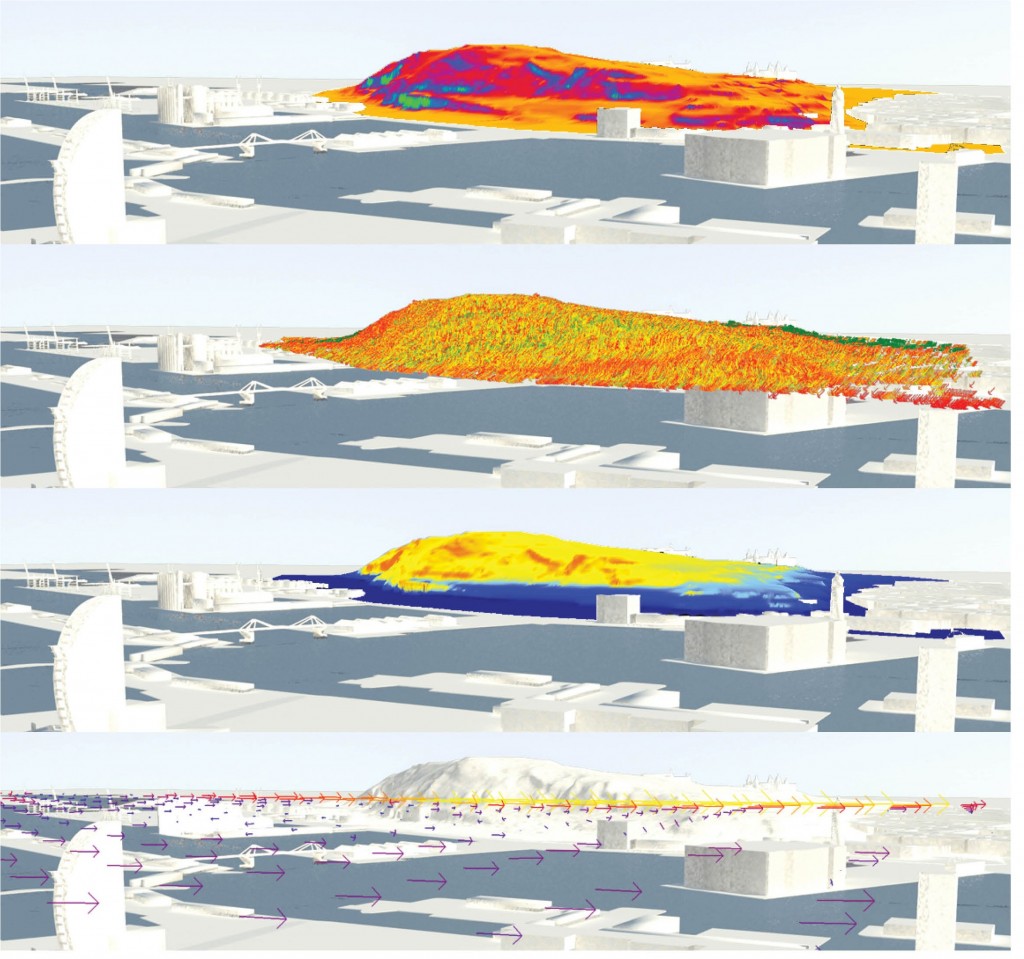
Our main interested inputs: 1. Slopes (as surfaces), 2. Slopes (as vectors), 3. Rain saturation, 4. Wind direction and speed
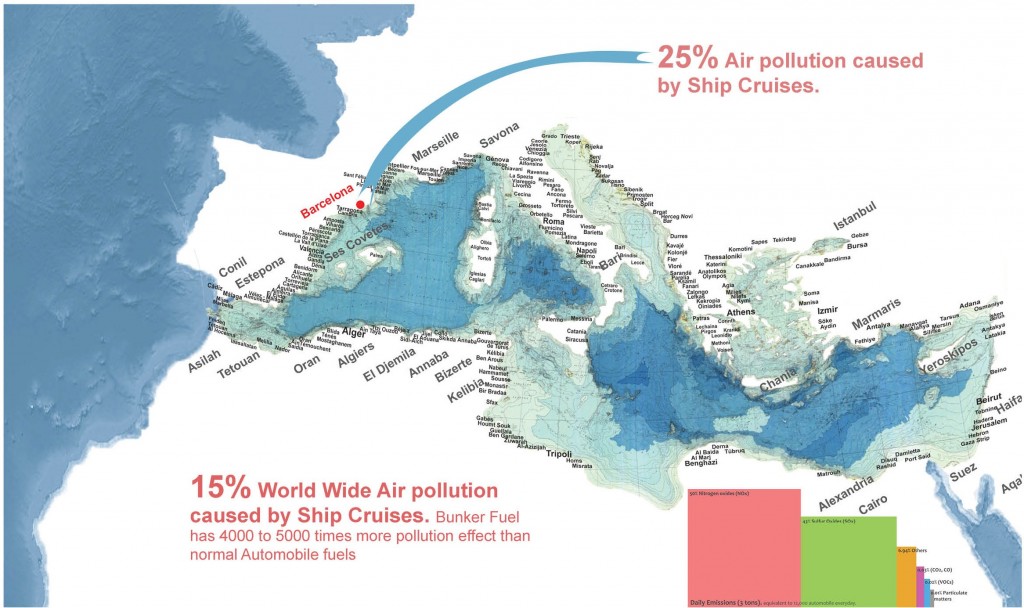
Cruise smoke pollution and composition map
Air pollution caused by cruises smoke percentage. Cruise smoke separated six main composition with percentages.
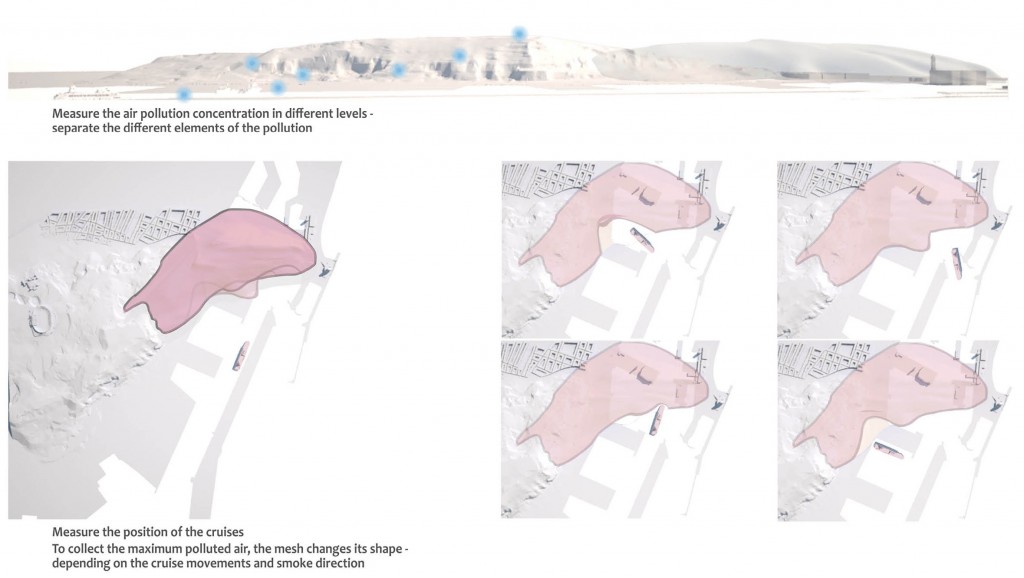
Collecting real time datas – with arduino sensor
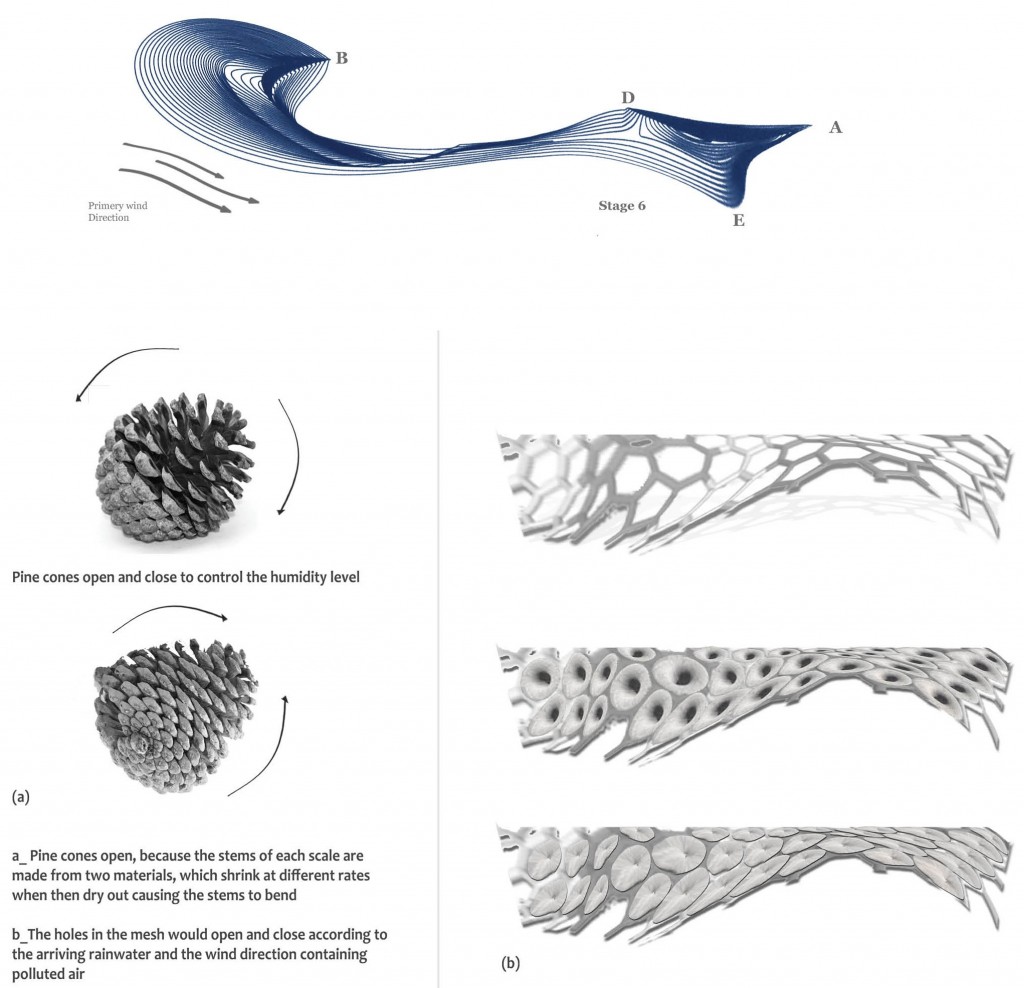
Emergence of dune formation and pine cone movement
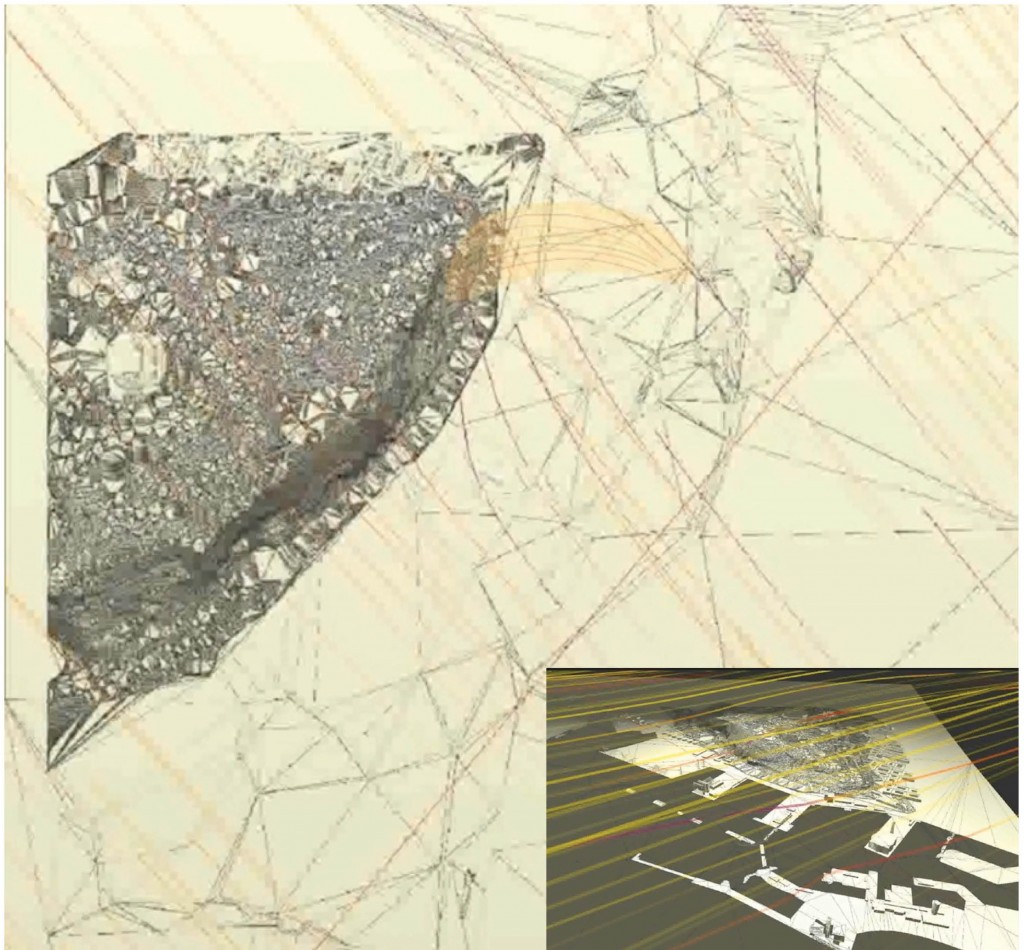
Process to generate the area and shape of the system by invisible layers of flows
One part of the air coming in low level is filtered by the natural system of Montjuic. The rest of the air doesn’t go up – it is turning to the city. The evolving system is able to capture the maximum polluted air.

Section of the system – Way of the process – starting with collecting and separating the different components of cruise air pollution.
Inputs and outputs diagrams – System input and output relations.
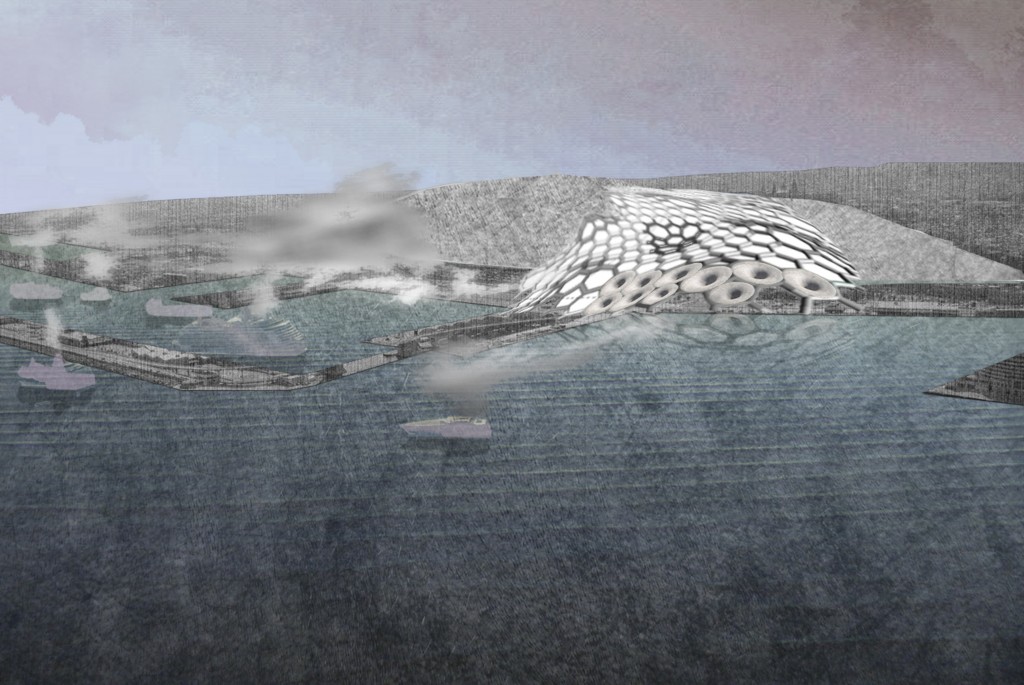
Collages
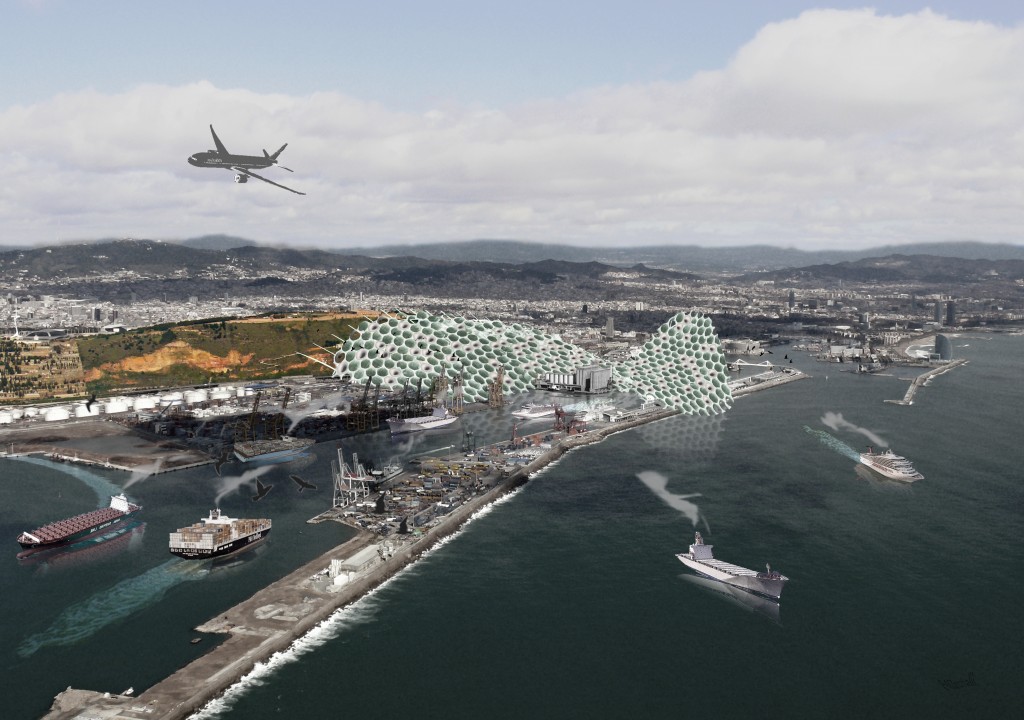
Our Final presentation Video
Ahmad Derhalli
Áron Biró



